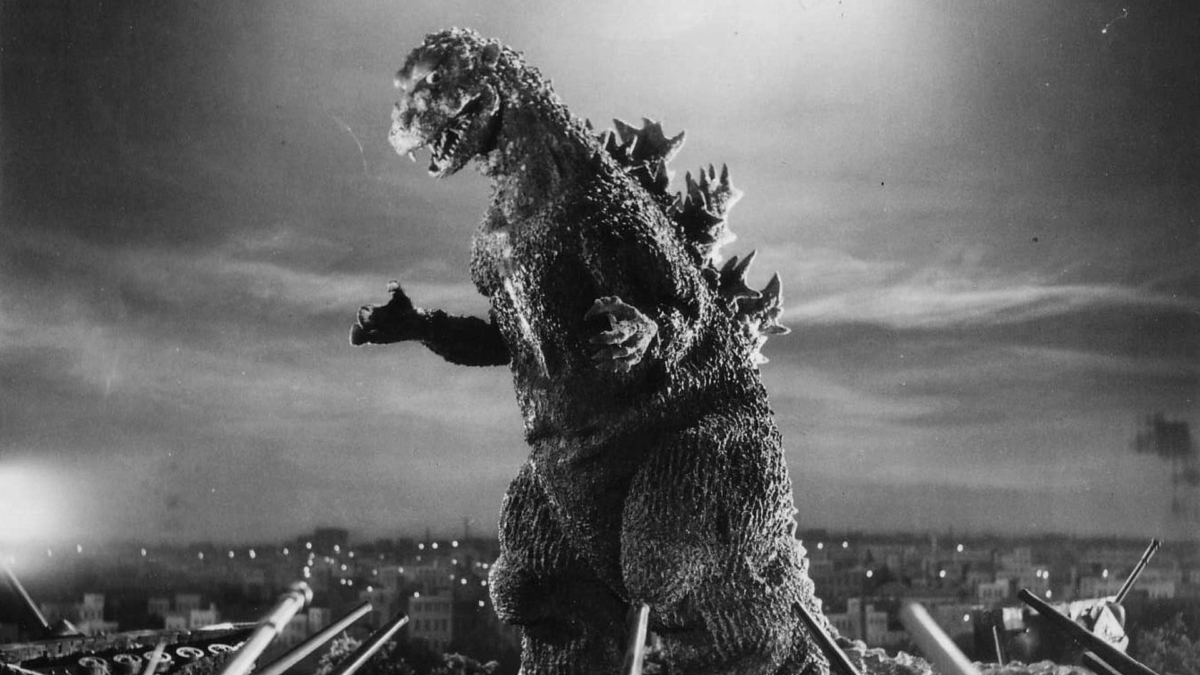Oh No! There Goes Tokyo! Toho to Helm New Godzilla Feature
by Beth Kelly
The Japanese film studio Toho is reportedly planning on releasing a new version of the original Godzilla later this year. While the entire concept of this fictional creature has been devalued over the years, it’s important to take a look at what the intentions of the original film sought to imbue to its audience.
The 1954 Original
Less than a decade before Toho released the original 1954 film, Gojira, the horrors of Hiroshima and Nagasaki that killed thousands and ended World War II had taken place. Better known in the West as “Godzilla”, the creature in the film lays waste to Tokyo in much the same fashion as atomic bombs did in 1945.
[youtube]https://www.youtube.com/watch?v=VKrj1ymJzmo[/youtube]Amid sights of children affected by radiation in crowded hospitals struggling to keep up, the characters in the film feverishly debate the ethics of using a destructive weapon in order to save themselves from the monster. They eventually agree to do so, but the end result is not one of celebration, but more of a bittersweet feeling that such weapons (much like the nuclear variety) should never be used in any form again. The film’s producer, Tomoyuki Tanaka, had actually been a fan of American horror films, but wanted to use those theme to instead show the true evil of this form of warfare.
Kaiju as an Allegory
The use of a monster in the film is a variation of “Kaiju”, which is a form of entertainment that Toho used before in its films. The Japanese word means “strange creature,” and has evolved from either animals, insects or creatures of mythology. At the time when many “strange creature” films were in theaters, in the mid 1940’s and 50’s, Cold War paranoia and a fear of nuclear weapons were rampant in popular culture. It’s certainly no accident that the Beast from 20,000 Fathoms (1953) and the enormous ants from Them! (1954) were also products of nuclear tests gone awry.
The Muted American Version
Two years after it was shown in Japan, the film was repackaged and edited for American audiences as Godzilla: King of the Monsters – with radically different results. While much of the original picture was included in the re-edit, a subplot involving a dopey reporter (played by pre-Perry Mason Raymond Burr) was tacked on to generate interest for an audience unfamiliar with the horrors of atomic warfare. As such, Toho’s original storyline was effectively depoliticized, and Godzilla became just another rubber-suited reptilian villain.
Without an understanding of the powerful context surrounding it, the film came off as a cheesy, low-budget popcorn flick. Americans could comfortably chuckle about Godzilla stomping through a demolished Tokyo, watching as the overgrown green monster pillaged and plundered. Though the film did well in Japan, it was this version that would launch the Godzilla franchise to international infamy.
Sequels of Little Consequence
A pervasive sense of absurdity continued in many of the subsequent sequels that followed, with Godzilla taking on the likes of King Kong or creatures from outer space. Many of these were of dubious quality, most leaning towards campy humor rather than serious horror. Some, such as Son of Godzilla, are almost unwatchable, but others, like Destroy All Monsters or Godzilla vs. Mechagodzilla, are nutty, endearing and entertaining. Many Godzilla films have disappeared into the annals of late-night cable, but others are still widely available for streaming (see this website.)
As a result of Godzilla’s cartoonish transformation, for many Western film viewers, he’s simply a silly creation of Japanese heritage, lacking any real social or cultural meaning.
[youtube]https://www.youtube.com/watch?v=ORSvf8eVa0g[/youtube] Fan-made Tribute Video of Godzilla’s Roars 1954-2014An Important Anniversary
The fact the new Toho film was announced in 2015 has special significance for those aware of it’s connection to the nuclear atrocities committed just 70 years ago. In the years since the first atomic blasts, one could argue we’ve made little headway in our consolidation or elimination of nuclear weaponry. While no other attacks of such magnitude have taken place, radiation from other nuclear disasters continues to affect millions worldwide. The events that unfolded at the Chernobyl power plant in the 1986, as well as at the Fukushima plant in 2011, remind us of the fragility of our world, as well as the eternal arrogance many display towards it.
Through this release, a greater awareness of the potential dangers in the use of nuclear-related material could again be offered up. At the very least, it could forever change the prism in which Godzilla is viewed by cinephiles across the globe.

